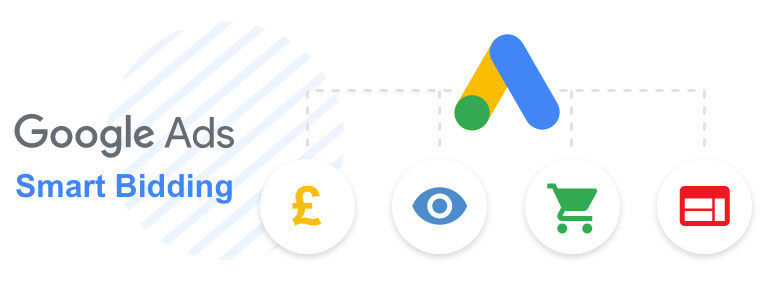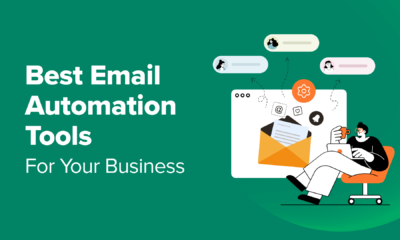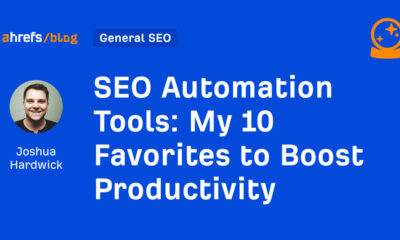MARKETING
AI For PPC Is Only Useful If You Use External Tools

Using AI (Artificial Intelligence) for PPC is no longer an option. It’s a necessity.
This was a topic that we ran with when we wrote for Search Engine Land. But generally, saying that AI is essential is only half the story.
When it comes to managing your PPC campaigns, you don’t just need AI. You need the best tools and strategies that are available. You can’t just stick the ‘AI’ label on it and expect them all to perform the same way.
Here’s the thing. Most advertising platforms have their own AI strategies and features integrated and ready for you to use. But when you look at AI tools to help you out, they’re all external. Why? Because internal tools aren’t good enough.
It’s a bold statement to make. So, we’re here to back it up, using Google Ads as an example. Here are some of the most popular AI-powered tools they offer and an unbiased assessment of how good they are.
Not-so-smart bidding
Okay, we had to start this article up with Google’s Ads smart bidding. There’s a good reason for this, as it’s one of the most hotly debated topics amongst PPC-ers. Right, let’s jump in.
Smart bidding is Google’s automated bidding strategy. You’re supposed to set your goal, including maximizing conversions or ROAS (Return On Ad Spend) and Google will automatically set and adjust your budgets to achieve this. These changes are powered by an AI that can analyze 70 million signals in 100 milliseconds. Wow.
The reality is a little far from this.
We’re not denying that for some companies, smart bidding has been paramount to increasing ROAS. But at the minute, it’s notoriously underdeveloped. The functionality just isn’t what it should be and it’s a complete no go for those who haven’t got the past data to work off.
They’ve added features like campaign level conversions and even got rid of accelerated ad delivery in an attempt to push advertisers towards it. But it’s not enough right now.
 Dynamic Search Ads that lack creativity
Dynamic Search Ads that lack creativity
DSA (Dynamic Search Ads) are adverts that are automatically created for you. Well, within certain parameters of course.
Instead of using keywords, you submit your website or product feed to Google. When someone searches for a relevant term, an advert is generated with text pulled from the website.
But automatic creation means you lose creative control. You’ll end up with adverts that lack personality and soul, like this example:
 But if you created the campaigns yourself, you could add a touch of personality to create something like this:
But if you created the campaigns yourself, you could add a touch of personality to create something like this:
 I know which one I’d click on.
I know which one I’d click on.
That’s not the only downside. If your website isn’t up to date, you risk serving broken adverts that do not work. Which means, your quality score will plummet potentially damaging other campaigns you might have running.
DSAs are useful for large businesses with huge catalogs. But for everyone else? It might be more hassle than it’s worth.
Time-consuming Responsive Search Ads
RSAs (Responsive Search Ads) are where you input up to 15 adaptive headlines and descriptions to test which one works best.
Unlike DSA, you’ll retain creative control over the exact text you use. The AI just ‘learns’ which variations perform best and then puts these out to up your clicks and conversions.
The downside? It takes a lot of time to set it up.
Let’s say you’ve got 5 campaigns, all with 10 ad groups inside of it. If you run RSAs for these, that’s 750 adaptative headlines you need to create. That’s what, a week of your time to set up what is essentially AI-powered ad testing?
Automated rules falling short of the throne
Automated rules are the AI leaders of the PPC marketing world.
They work like this: when a certain event happens, like your CPC (cost-per-click) dropping below a certain amount, your keyword, ad or campaign will be automatically changed in response.
This saves so much manual time and surveillance doing it yourself. There are a few hoops you have to jump through to get these working on Google. And, annoyingly enough there isn’t a single screen that they’re all displayed in and managed from.
Secondly, the time they run limits the benefits you get. For example, if you set them to run at 9am and your action was triggered at 2am the night before, your campaigns will be running for 7 hours under the wrong bid or status.
Lastly, email is the only notification that Google support, which isn’t useful for all businesses.
The premise is good. The actual execution? Not so.
 Bridging the gap with external automated PPC scripts
Bridging the gap with external automated PPC scripts
PPC scripts are coded scripts that are supposed to automate part of your management. One of the best examples is the Zero Impressions Alarm, which alerts you if your impressions fall to 0.
Most PPC scripts require good Javascript knowledge to build and customize them to your exact needs.
Basically, people noticed the need for AI and the missing gap in the platforms. So, they created their own solutions for it, far before Google did. They’re ahead of the game and Google is behind.
The least Google could do was recognize this and integrate them directly into the platform. But that isn’t the case. PPC scripts remain distinctly separate. This is made obvious as soon as a Google update is pushed live and most scripts suddenly fail to work. Yet again, you’re back to the code.
Get the results you need from external tools
The internal AI tools that Google and other PPC platforms offer have their benefits. But they’re just not good enough… yet.
They feel like the great ideas from someone who was 5 years late to the party. Unfortunately, in the time it will take for them to catch up – external scripts and tools will be ahead of the crowd.
That’s because they were built to solve problems that people were already facing. They saw it from PPC managers perspective and knew how to use the AI to make life easier.
If you want to leverage AI, don’t stick to internal tools. Discover what other types of PPC software are out there and see how they compare. It might just make your life a whole lot easier.


















